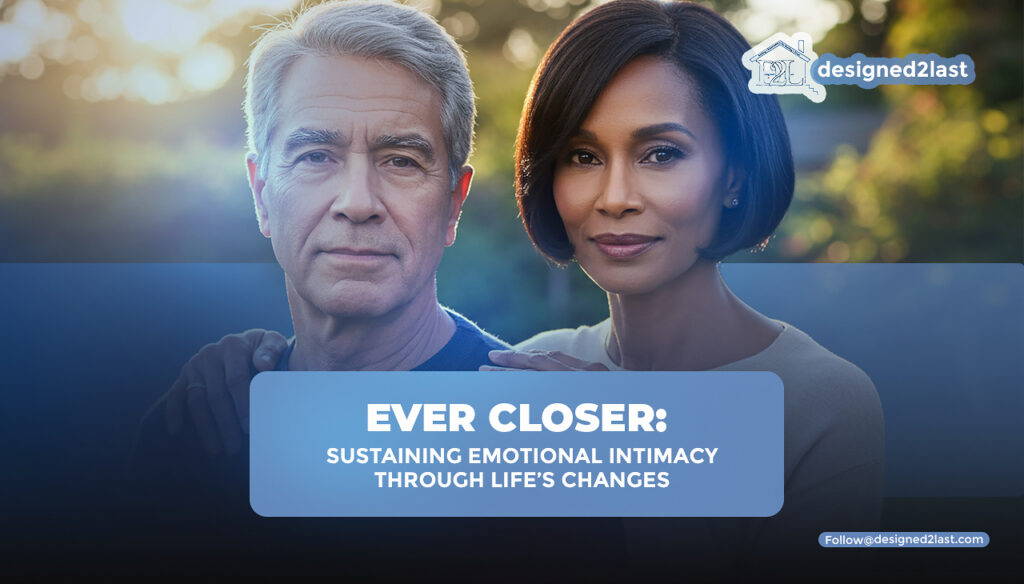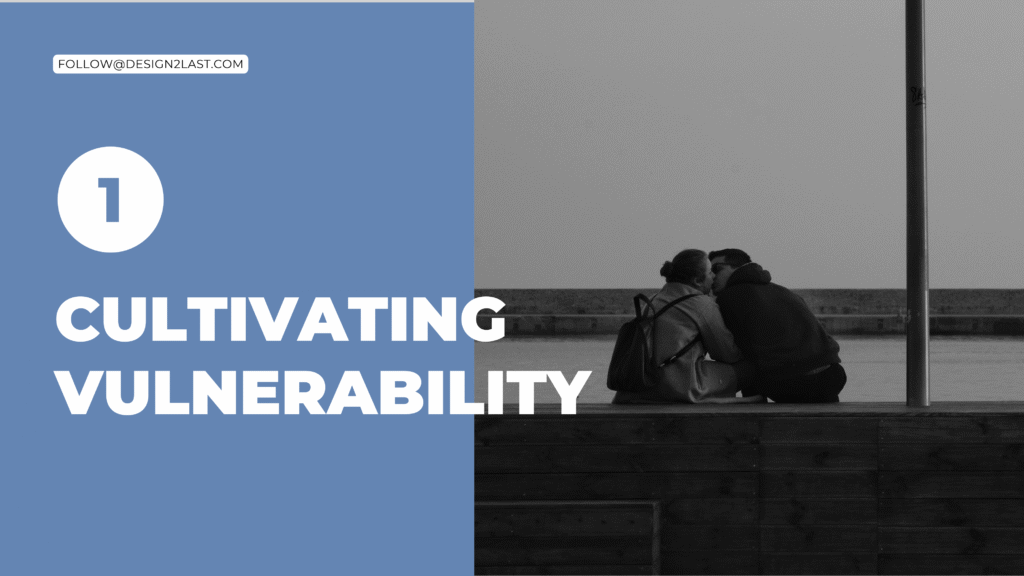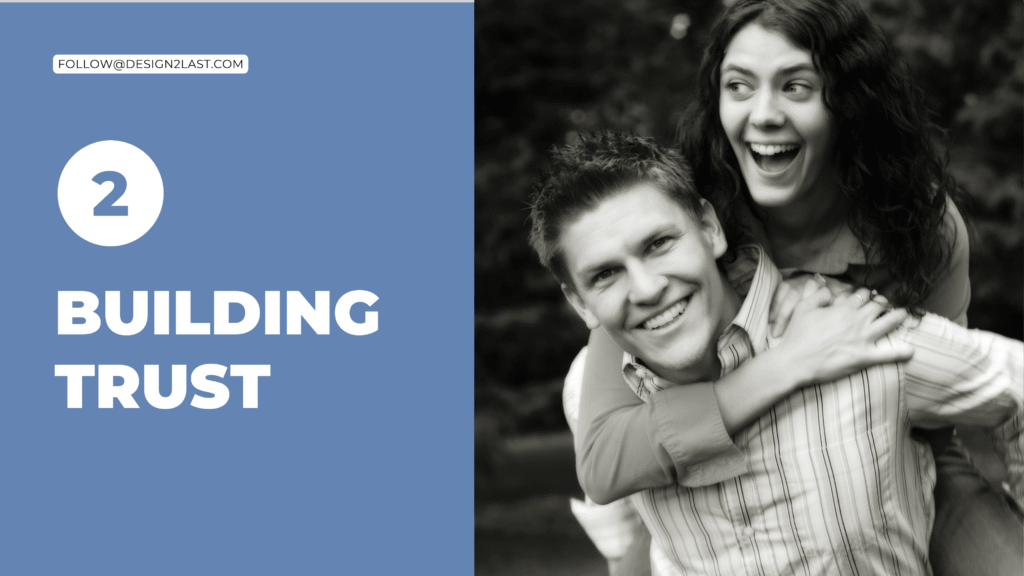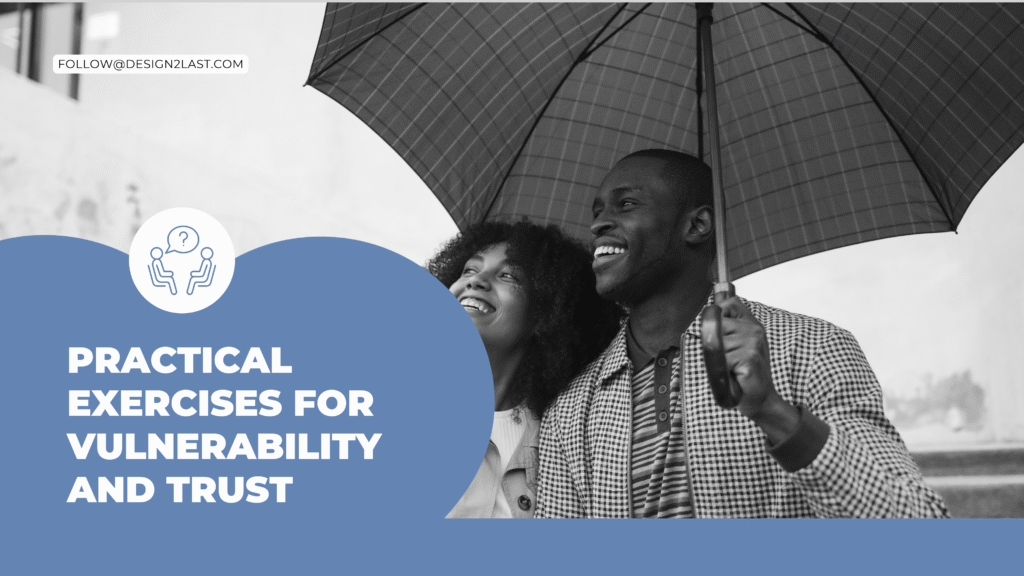
In the third installment of our series “Deepening Emotional Intimacy: From Surface-Level to Soul-Level Connection,” we delve into the transformative powers of vulnerability and trust. Building on our understanding of the barriers that hinder closeness, this post will guide you through practical exercises and approaches to foster openness and deepen trust between partners.

The Foundation of Vulnerability and Trust
Vulnerability and trust are two sides of the same coin in the realm of intimate relationships. To achieve a deep emotional connection, both elements must be actively cultivated and nurtured. Here’s why they are essential:
- Vulnerability allows for the exposure of one’s inner thoughts, feelings, and desires, laying the groundwork for authenticity.
- Trust is the assurance that one’s vulnerabilities will not be mishandled by their partner, creating a safe space for open sharing.

Cultivating Vulnerability
Vulnerability is often misunderstood. It is not about being weak, but about being brave enough to let your true self be seen. Here’s how you can begin to cultivate vulnerability in your relationship:
Self-awareness
- Reflection: Start with personal reflection to understand what makes you feel vulnerable. This might include fears, aspirations, or insecurities. Journaling can be a great tool for self-discovery (read more about the benefits of journaling).
- Share Insights: Gradually share these insights with your partner, explaining why certain things make you feel vulnerable. This process strengthens trust and mutual understanding. For more on improving communication in relationships, check out The Silent Power of Trust and the Art of Communication in Lasting Relationships.
- Small Revelations: Begin by sharing small, less risky things that make you feel slightly vulnerable. As trust builds, you can share more significant aspects of your life. If you’re new to this, you might find Brené Brown’s TED Talk on vulnerability inspiring.
- Feedback: Encourage and support each other’s efforts to be vulnerable. Positive reinforcement can strengthen the bond and encourage further openness.
- Non-judgmental Listening: Foster an environment where each partner feels safe to share without fear of judgment or immediate criticism. Active listening techniques, like summarizing and validating, can help—here’s a helpful resource.
- Empathy: Respond with empathy and understanding, validating each other’s feelings and experiences. If you’re looking to strengthen your empathic skills, this article on practicing empathy is a great place to start.

Building Trust
Trust is built through consistent actions over time. Here’s how you can strengthen trust in your relationship:
Consistency and Reliability
- Keep Promises: Show your partner that you can be relied on by keeping your promises and commitments.
- Predictability: Be consistent in your behavior. This predictability helps your partner feel secure and builds trust.
- Open Communication: Be open about your thoughts, feelings, and actions. Transparency is key to building trust.
- Honesty: Even when it’s difficult, honesty helps to cement trust and shows respect for your partner and the relationship.
- Supportive Actions: Regularly demonstrate your support for your partner, both in their personal challenges and in your relationship.
- Reassurance: Regularly affirm your commitment to the relationship, especially after conflicts or during difficult times
Practical Exercises for Vulnerability and Trust

Engage in exercises designed to enhance vulnerability and trust:
- Shared Histories: Take turns sharing personal stories from different stages of your life. This exercise can deepen understanding and empathy.
- Fear Setting: Discuss your fears regarding the relationship, personal life, or careers. Understanding each other’s fears can foster empathy and support.
- Dream Sharing: Regularly share your dreams and aspirations. This helps to align your visions and support each other’s goals.
Conclusion
Embracing vulnerability and building trust are ongoing processes that demand patience and commitment. By practicing the exercises and principles outlined above, you can start to transform your relationship into a deeper, more fulfilling partnership.
Looking Ahead
In our next post, we will explore active listening and empathy—key skills that support vulnerability and trust by ensuring you truly understand each other. Stay tuned as we continue to guide you toward a deeper emotional connection.
